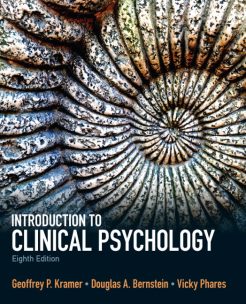Description
Psychology Ciccarelli 4th Edition Test Bank
Psychology Ciccarelli White 4th Edition Test Bank
***THIS IS NOT THE ACTUAL BOOK. YOU ARE BUYING the Test Bank in e-version of the following book***
Name: Psychology
Author: Ciccarelli White
Edition: 4th
ISBN-10: 0205972241
Type: Test Bank
– The test bank is what most professors use an a reference when making exams for their students, which means there’s a very high chance that you will see a very similar, if not exact the exact, question in the test!
– The file is either in .doc, .padf, excel, or zipped in the package and can easily be read on PCs and Macs.
– Delivery is INSTANT. You can download the files IMMEDIATELY once payment is done.
If you have any questions, please feel free to contact us. Our response is the fastest. All questions will always be answered in 6 hours., most of the time within 30mins
We also faced similar difficulities when we were students, and we understand how you feel.
But now, with the Psychology Test Bank, you will be able to
* Anticipate the type of the questions that will appear in your exam.
* Reduces the hassle and stress of your student life.
* Improve your studying and also get a better grade!
* Get prepared for examination questions.
*Can save you time and help you understand the material.
This is the quality of service we are providing and we hope to be your helper.
Delivery is in the next moment. Test Bank is accurate.
Prepare to receive your Psychology Test Bank in the next moment.
If you have any questions, or would like a receive a sample chapter before your purchase, please contact us at inquiry@testbankcorp.com
Psychology Test Bank
Psychology Ciccarelli White 4th Edition Test Bank ISBN: 0205972241
2 The Biological Perspective
Key: Answer, Page, Type, Learning Objective, Level
Type
A=Applied
C=Conceptual
F=Factual
Level
(1)=Easy; (2)=Moderate; (3)=Difficult
LO=Learning Objective
SG=Used in Study Guide
p=page
MULTIPLE CHOICE
An Overview of the Nervous System
Learning Objective 2.1 – What are the nervous system, neurons, and nerves, and how do they relate to one another?
1. The function of the _________________________ is to carry information to and from all parts of the body.
a) soma
Incorrect. The primary responsibility of the soma is to maintain the life of the neuron.
b) synapse
c) nervous system
Correct. Sending information to and from all parts of the body is the primary function of the nervous system.
d) endorphins
ANS: c, p. 46, F, LO=2.1, (1)
% correct 91 a= 2 b= 4 c= 91 d=33 r = .32
% correct 100 a= 0 b= 0 c= 100 d= 0 r = .00
APA: LO 1.2
2. The nervous system is defined as____________________.
a) a complex network of cells that carries information to and from all parts of the body
Correct. The nervous system is a complex network of cells that carry information to and from all parts of the body.
b) a specialized cell that makes up the brain and nervous system
c) all nerves and neurons that are not contained in the brain and spinal cord but that run throughout the body itself
Incorrect. The nervous system includes networks of neurons that are in the brain and spinal cord.
d) a gland located in the brain that secretes human growth hormone
ANS: a, p. 46, F, LO=2.1, (1)
% correct 92 a= 92 b= 1 c= 6 d= 1 r = .27
% correct 94 a= 94 b= 1 c=4 d= 0 r = .26
APA: LO 1.2
3. The two main divisions of the nervous system are the ________ and ________.
a) brain; spinal cord
b) autonomic; somatic nervous systems
Incorrect. The autonomic and somatic nervous systems are divisions of the peripheral nervous system.
c) peripheral nervous system; central nervous system
Correct. These are the two main divisions of the nervous system.
d) glands; muscles
ANS: c, p. 46, F, LO=2.1, (1)
% correct 73 a=8 b= 18 c= 73 d= 0 r = .42
% correct 68 a= 18 b= 13 c= 68 d= 0 r = .47
APA: LO 1.2
4. The branch of life sciences which involves the structure and function of the brain and nervous system, while also focusing on the relationship between learning and behavior, is called ________.
a) neuroscience
Correct. This is the branch of life sciences that covers these topics.
b) bioscience
Incorrect. The correct answer is a.
c) brain scientology
d) neurostemology
ANS: a, p. 47, F, LO=2.1, (1)
APA: LO 1.2
5. The part of the neuron whose name literally means “branch” is ________.
a) axon
Incorrect. B is the correct answer.
b) dendrite
Correct. Dendrite comes from the word tree.
c) myelin
d) soma
ANS: b, p. 47, F, LO=2.1, (1)
% correct 77 a= 20 b= 77 c= 1 d= 1 r = .32
APA: LO 1.2
6. A specialized cell that makes up the nervous system that receives and sends messages within that system is called
a _________.
a) glial cell
Incorrect. Glial cells serve as a structure for neurons.
b) neuron
Correct. A neuron is a specialized cell that makes up the nervous system that receives and sends messages within
that system.
c) cell body
d) myelin sheath
ANS: b, p. 47, F, LO=2.1, (1), SG
% correct 96 a= 4 b= 96 c= 0 d= 0 r = .19
% correct 97 a= 2 b= 97 c= 1 d= 0 r = .39
APA: LO 1.2
7. What term is used to describe a specialized cell that makes up the nervous system and receives and sends
messages within that system?
a) neuron
Correct. A neuron is a specialized cell that makes up the nervous system and receives and sends messages within
that system.
b) glial cell
Incorrect. Glial cells serve as a structure for neurons.
c) myelin sheath
d) dendritic spine
ANS: a, p. 47, F, LO=2.1, (1)
% correct 96 a= 96 b= 3 c= 1 d= 0 r = .25
% correct 95 a= 95 b= 4 c= 1 d= 0 r = .27
APA: LO 1.2
8. The branchlike structures that receive messages from other neurons are called ______.
a) axons
Incorrect. Axons send but do not receive messages.
b) nerve bundles
c) dendrites
Correct. Dendrites receive messages from other neurons.
d) synapses
ANS: c, p. 47, F, LO=2.1, (1)
% correct 84 a= 10 b= 2 c= 84 d= 4 r = .39
% correct 83 a=11 b= 0 c= 83 d= 5 r = .31
APA: LO 1.2
9. Which part of the neuron is responsible for maintaining the life of the cell?
a) axon
b) soma
Correct. The soma is responsible for maintaining the life of the cell.
c) dendrite
d) cell membrane
Incorrect. The soma is responsible for maintaining the life of the cell.
ANS: b, p. 47, F, LO=2.1, (2)
% correct 70 a= 5 b= 70 c= 2 d= 23 r = .37
% correct 74 a= 0 b= 74 c= 26 d= 1 r = .32
APA: LO 1.2
10. The part of a neuron that contains the nucleus and keeps the entire cell alive and functioning is the _____.
a) axon
b) cell membrane
Incorrect. The soma is responsible for maintaining the life of the cell.
c) dendrite
d) soma
Correct. The soma is responsible for maintaining the life of the cell.
ANS: d, p. 47, F, LO= 2.1, (1)
% correct 67 a= 7 b= 23 c= 2 d= 67 r = .56
APA: LO 1.2
11. Dendrite is to axon as:
a) send is to receive.
Incorrect. This is the opposite of the correct answer.
b) send is to regulate.
c) receive is to send.
Correct. Dendrites are treelike parts of the neuron that are designed to receive messages. The axon sends messages to other neurons.
d) receive is to release.
ANS: C, p. 47, C, LO=2.1, (2)
APA: LO 1.2
12. Which part of a neuron is attached to the soma and carries messages out to other cells?
a) soma
b) axon
Correct. The axon carries messages to other cells.
c) dendrite
Incorrect. Dendrites receive messages.
d) cell membrane
ANS: b, p. 47, F, LO= 2.1, (1)
% correct 81 a= 2 b= 81 c= 14 d= 4 r = .31
APA: LO 1.2
13. The function of the neuron’s axon is to ______.
a) carry messages to other cells
Correct. The function of the axon is to carry messages to other cells.
b) regulate the neuron’s life processes
c) receive messages from neighboring neurons
Incorrect. Dendrites, not axons, receive messages.
d) insulate against leakage of electrical impulses
ANS: a, p. 47, F, LO=2.1, (2)
% correct 67 a= 67 b= 2 c= 10 d= 21 r = .41
% correct 80 a= 80 b= 6 c= 13 d= 2 r = .30
APA: LO 1.2
14. _________ receive messages from other neurons and _____________send messages to other neurons.
a) Axons; dendrites
Incorrect. Axons send messages, and dendrites receive messages.
b) Axon; soma
c) Soma; glial cells
d) Dendrites; axons
Correct. Dendrites receive messages, and axons send messages to other cells.
ANS: d, p. 47, F, LO=2.1, (2)
% correct 71 a= 23 b= 3 c= 4 d= 71 r = .39
% correct 78 a= 17 b= 3 c= 1 d= 78 r = .46
APA: LO 1.2
15. Which of the following best represents the order in which a neuron receives and transmits information?
a) dendrites, cell body, axon, axon terminals
Correct. The dendrite receives a message, the cell body processes it, the axon takes a message to the axon terminals, and the terminal buttons release neurotransmitters.
b) axon terminals, dendrites, cell body, axon
c) cell body, dendrites, axon terminals, axon
Incorrect. Every part of this answer is out of the correct order.
d) axon, cell body, dendrites, axon terminals
ANS: A, p. 47-51, C, LO=2.1-2.2, (2)
APA: LO 1.2
16. Your teacher asks you to describe the sequence of parts of a neuron that the impulse travels during neural conduction. Which of the following sequences will you offer?
a) dendrites, axon, soma, synaptic knob
b) terminal buttons, axon, soma, dendrites
c) axon, soma, dendrites, synaptic knob
Incorrect. The neural impulse begins with the receipt of messages from the dendrites.
d) dendrites, soma, axon, synaptic knob
Correct. This answer describes the correct sequence.
ANS: d, pp. 47-54, A, LO=2.1-2.2, (3)
APA: LO 1.2
17. Neurons make up ________% of the brain whereas glial cells make up ________%.
a) 50; 50
b) 25; 75
c) 10; 90
d) 5; 95
ANS: c, p. 48, F, LO=2.1, (2)
APA: LO 1.2
18. The two types of glial cells are called ________ and ________.
a) occipital; lobitical
b) oligodendrocytes; Schwann cells
Correct. These are the two types according to the text.
c) occipital; Schwann
Incorrect. B is the correct answer.
d) oligodendrocytes; lobitical
ANS: b, p. 48, F, LO=2.1, (3)
APA: LO 1.2
19. Glial cells make up ____________ of the brain’s cells.
a) 10 percent
Incorrect. Neurons make up ten percent of the cells in the brain.
b) 70 percent
c) 80 percent
d) 90 percent
Correct. Ninety percent of the brain is composed of glial cells.
ANS: d, p. 48, F, LO=2.1, (3)
APA: LO 1.2
20. What are two roles of glial cells?
a) acting as insulation and providing structure to surrounding neurons
Correct. This answer defines two roles of glial cells.
b) shaping cells and moving new neurons into place
Incorrect. Glial cells provide structure and insulation to neurons.
c) regulating metabolic activity and serving as pain detectors
d) monitoring neural transmission and releasing hormones in the brain
ANS: a, p. 48, C, LO=2.1, (3)
% correct 59 a= 59 b= 4 c= 11 d= 22 r = .32
% correct 61 a= 61 b= 8 c= 7 d= 24 r = .32
APA: LO 1.2
21. A cell in the human nervous system whose primary function is to provide insulation and structure for neurons on which they may develop and work is called a(n) _________.
a) epidermal cell
b) adipose cell
c) glial cell
Correct. Glial cells serve as a structure on which neurons develop and work.
d) myelin sheath
Incorrect. The myelin sheath does not serve as a structure on which neurons develop and work.
ANS: c, p. 48 F, LO=2.1, (2)
% correct 46 a= 3 b= 1 c= 46 d= 51 r = .34
APA: LO 1.2
22. What is the function of myelin?
a) to serve as a structure for neurons
Incorrect. This is the function of glial cells, not myelin.
b) to monitor neural activity
c) to speed up the neural impulse
Correct. Myelin speeds up the neural impulse.
d) to produce neurotransmitters
ANS: c, p. 48, F, LO=2.1, (2)
% correct 71 a= 14 b= 7 c= 71 d= 9 r = .33
% correct 62 a= 28 b= 3 c= 62 d= 8 r = .44
APA: LO 1.2
23. Which of the following is true about myelin?
a) It’s a fatty substance.
Correct. Myelin is made up of a penny type of tissue called glial cells.
b) It is covered by axons.
Incorrect. Myelin covers axons. It is not covered by axons.
c) It inhibits neural communication.
d) It slows down neuronal operations.
ANS: A, p. 48, F, LO=2.1, (2)
APA: LO 1.2
24. One purpose of the ____________________ is to speed up the neural message traveling down the axon.
a) receptor site
b) axon terminal
Incorrect. The axon terminal does not speed up the neural impulse.
c) myelin
Correct. Myelin speeds up the neural impulse.
d) synaptic vesicle
ANS: c, p. 48, C, LO=2.1, (2)
% correct 78 a= 2 b= 8 c= 78 d= 13 r = .31
APA: LO 1.2
25. A group of axons bundled together coated in myelin that travels together through the body is called a ______.
a) a synaptic vesicle
b) nerve
Correct. Bundles of myelin-coated axons travel together in cables called nerves.
c) neurilemma
Incorrect. Neurilemma enable damaged neurons to repair themselves.
d) a myelinated pathway
ANS: b, p. 48, F, LO=2.1, (1)
% correct 60 a= 20 b= 60 c= 6 d= 14 r = .49
APA: LO 1.2
26. A nerve is a group of ______ bundled together.
a) axons
Correct. Nerves are bundles of myelin-coated axons.
b) interneurons
c) dendrites
Incorrect. Dendrites are part of the neuron.
d) glial cells
ANS: a, p. 48, F, LO=2.1, (2)
% correct37 a= 37 b= 37 c= 8 d= 18 r = .31
APA: LO 1.2
27. Juan’s toe was severed and was quickly sewn back on by a surgeon. As a result, he regained some function and feeling in his toe. Which of the following are responsible for Juan’s ability to regain function and feeling in his toe?
a) myelin
Incorrect. Myelin speeds up the neural impulse.
b) glial cells
c) dendrites
d) neurilemma
Correct. Neurilemma enable damaged neurons to repair themselves.
ANS: d, p. 48, A, LO=2.1, (3)
APA: LO 1.2
28. When a cell is “at rest,” it is in a state called the ________.
a) stopping point
b) obcipitation junction
Incorrect. This is a fictitious word.
c) resting potential
Correct. A cell at rest is in a state called the resting potential.
d) action potential
ANS: c, p. 49, F, LO=2.1, (1)
% correct 85 a= 1 b= 0 c= 85 d= 13 r = .41
APA: LO 1.2
29. The charge that a neuron at rest maintains is due to the presence of a high number of _________ charged ions inside the neuron’s membrane.
a) actively
b) passively
c) negatively
Correct. Negatively charged ions inside of the neurons membrane is what gives rise to a negative resting potential.
d) positively
Incorrect. It is during the action potential the positively charged ions flow into the neuron and outnumber the negatively charged ions.
ANS: C, p. 49, C, LO=2.1, (2)
APA: LO 1.2
30. When the electric potential in a cell is in action versus a resting state, this electrical charge reversal is known as the _________________.
a) resting potential
Incorrect. This would be when a cell continued to be at rest.
b) excitation reaction
c) action potential
Correct. This is the state where the electrical charge is reversed.
d) permeable reaction
ANS: c, p. 49, C, LO=2.1, (1)
% correct 75 a= 14 b= 10 c= 75 d= 1 r = .31
APA: LO 1.2
31. The term “fire” when referring to neural transmission indicates that a neuron:
a) has become less positive in charge.
b) has received, in its dendrites, appropriate inputs from other neurons.
Correct. A neuron fires after the dendrites receive enough stimulation to trigger the cell body to generate an action potential.
c) is unable to transmit information to another neuron.
d) has become more negative in charge.
Incorrect. In fact, the firing state of the neuron occurs when it generates a positive charge rather than a negative charge.
ANS: B, p. 49, C, LO=2.1, (2)
APA: LO 1.2
32. What do we call the state of a neuron when it is not firing a neural impulse?
a) action potential
Incorrect. Action potential is the state a neuron is in when firing a neural impulse.
b) resting potential
Correct. Resting potential is the state a neuron is in when not firing a neural impulse.
c) myelination signal
d) transmission impulse
ANS: b, p. 49, F, LO=2.1, (1)
% correct 84 a= 11 b= 84 c= 1 d=4 r = .18
APA: LO 1.2
33. The state during which a neuron contains more negatively charged ions inside the cell than outside the cell and is not firing is referred to as the__________.
a) action potential
Incorrect. Action potential is the state a neuron is in when firing.
b) quiet potential
c) synaptic potential
d) resting potential
Correct. Resting potential is the state a neuron is in when a cell is not firing a neural impulse.
ANS: d, p. 49, F, LO=2.1, (2)
% correct 85 a= 4 b= 4 c= 7 d= 85 r = .19
APA: LO 1.2
34. During action potential, the electrical charge inside the neuron is ______ the electrical charge outside the neuron.
a) positive compared to
Correct. There are more positively charged ions inside the cell than outside.
b) larger than
c) negative compared to
Incorrect. During resting potential, the inside is more negatively charged.
d) smaller than
ANS: a, p. 49, C, LO=2.1, (2)
APA: LO 1.2
35. When a neuron fires, it fires in a(n) ________ fashion as there is no such thing as “partial” firing.
a) all-or-none
Correct. This is the term used to describe how neurons fire according to the book.
b) rapid fire
c) accidental patterned
d) quick successioned
Incorrect. This is not the term referred to by the book
ANS: a, p. 51, C, LO=2.1 (2)
APA: LO 1.2
36. “All or none” is the principle stating that ______.
a) a neuron either fires or does not fire
Correct. A neuron either fires or does not fire.
b) a neuron fires at full strength or not at all
Incorrect. Neurons can fire at different strengths.
c) all the dendrites must be receiving messages telling the neuron to fire or it will not fire at all
d) all somas must be receiving messages telling the neuron to fire or it will not fire at all
ANS: a, p. 51, F, LO=2.1, (2)
% correct 54 a= 54 b= 31 c= 10 d= 5 r = .37
% correct 41 a= 41 b= 52 c= 4 d= 3 r = .29
APA: LO 1.2
Neurons and Nerves: Building the Network
Learning Objective 2.2 – How do neurons use neurotransmitters to communicate with each other and with the body?
37. The swellings or knobs at the end of the axon are called________.
a) axon terminals
Correct. The axon terminals are located at the ends of the axon.
b) synaptic vesicles
Incorrect. Synaptic vesicles are structures within the synaptic knobs.
c) synapses
d) receptor sites
ANS: a, p. 51, F, LO=2.2, (1)
APA: LO 1.2
38. What is the term used to describe the bulbs located at the end of the axon?
a) axon terminals
Correct. The axon terminals are located at the end of the axon.
b) synaptic vesicles
Incorrect. Synaptic vesicles are structures within the synaptic knobs.
c) synapses
d) receptor sites
ANS: a, p. 51, F, LO=2.2, (2)
% correct 59 a= 59 b= 15 c= 3 d= 22 r = .48
% correct 52 a= 52 b= 20 c= 13 d= 15 r = .38
APA: LO 1.2
39. What is the term used to describe the rounded areas on the ends of the axon terminals?
a) synaptic vesicles
Incorrect. Synaptic vesicles are structures within the synaptic knobs.
b) axons
c) dendrites
d) synaptic knobs
Correct. Synaptic knobs are located at the tip of each axon terminal.
ANS: d, p. 51, F, LO=2.2, (2)
% correct 73 a= 24 b= 1 c= 2 d= 73 r = .33
% correct 75 a= 19 b= 1 c= 5 d= 75 r = .20
APA: LO 1.2
40. The saclike structures found inside the synaptic knob containing chemicals are called________.
a) axon terminals
Incorrect. The axon terminals are limblike structures.
b) synapses
c) synaptic vesicles
Correct. Synaptic vesicles are structures within the synaptic knobs.
d) receptor sites
ANS: c, p. 51, F, LO=2.2, (1)
% correct 69 a= 5 b= 8 c= 69 d= 17 r = .53
% correct 64 a= 20 b= 12 c= 64 d= 14 r = .45
APA: LO 1.2
41. Which of the following are tiny sacs in a synaptic knob that release chemicals into the synapse?
a) synaptic vesicles
Correct. Synaptic vesicles are structures within the synaptic knobs.
b) synaptic nodes
c) terminal buttons
Incorrect. Terminal buttons are the same as synaptic knobs.
d) synaptic gaps
ANS: a, p. 51, F, LO=2.2 (2)
% correct 65 a= 65 b= 22 c= 10 d= 3 r = .36
APA: LO 1.2
42. A chemical found in the synaptic vesicles which, when released, has an effect on the next cell is called
a__________.
a) glial cell
b) neurotransmitter
Correct. Neurotransmitters are stored in the synaptic vesicles.
c) precursor cell
d) synapse
Incorrect. The synapse is the space between the synaptic knob of one cell and the dendrites of the next cell.
ANS: b, p. 52, F, LO=2.2, (1), SG
% correct 74 a= 4 b= 74 c= 4 d= 18 r = .34
APA: LO 1.2







Reviews
There are no reviews yet.